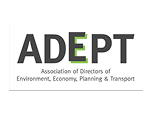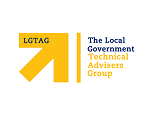The local roads maintenance backlog in England and Wales has hit a record £14bn, an increase of 11%.
After punishing levels of inflation this year, the shortfall between current carriageway funding levels and what is needed to prevent further decline, jumped by 20% - roughly the level of inflation many argue the highways sector has recently faced – to reach £1.3bn in 2022/2023.
Authorities said this year they only received around two-thirds of the amount they say they would have needed to maintain their network to their own targets.
Highway departments estimate it would now take 11 years to get local roads back into a reasonable steady state, even if adequate funding and resources were in place.
And while preventative maintenance such as resurfacing is estimated to be 20 times more cost effective per square metre than reactive work, such as patching and filling potholes, the average surfacing frequency across all types of road is now astonishingly every 116 years.

Record-breaking bad news
Both the overall backlog and the funding shortfall represent the most challenging results ever reported in 28 years of successive ALARM surveys – the annual local authority roads maintenance report from the Asphalt Industry Alliance. This year 75% of authorities responsible for local roads across England and Wales responded.
Average highway maintenance budgets across England and Wales increased by 4.5% to £25.8m per authority this year, but due to rising inflation this represents a cut in real terms. On top of this, the average percentage of highway maintenance budget allocated to the carriageway – rather than other assets such as signage, street lighting or drainage - dropped slightly to 50%, the lowest it has been for a decade.
The ALARM survey only monitors the carriageway maintenance - the rod surface and structure - so the total backlog is likely to be much higher, for instance, the bridge maintenance backlog is close to £6bn for Great Britain.
Despite increased average highway maintenance budgets, average carriageway maintenance spending showed a small drop to £13.0m from £13.2m last year.
On top of this, a majority (53%) of authorities actually reported a cut or freeze in their highway maintenance budget, even before inflation is taken into account.
The total highway maintenance budget was £4.33bn in 2022-2023.
A change has to come
In a bleak summation, Rick Green, chair of the Asphalt Industry Alliance, which produces the survey, warned: ‘Without a change to the funding structure and the amount allocated, local road conditions can't – and won't – improve.'
Speaking to Highways he outlined some of the changes that could help rescue the state of the local network: ‘The local roads are in an absolutely shocking condition and they are getting worse. They are getting close to really problematic conditions and hopefully, politicians will decide to allocate more funding to local roads.
‘The AIA is currently developing a paper alongside the All Party Parliamentary Group [for Better Roads] and we are calling for ringfencing of money for carriageways. If we can't have more money some ringfencing would definitely be a better solution as well as a longer-term settlement for the spending. So, if we don't have more money at least we know what we have so we can plan it better.'
Almost all responses to this year's ALARM survey indicated that at least five years should be considered as the optimal term (five years: 61%; 10 years: 35%) for the funding horizon.
While the 2021 October Spending Review allocated local highways maintenance funding between tax years 2022 and 2025, many have argued that given current levels of inflation the frozen funding levels have made things worse.
‘If we do have a longer-term budget, they definitely need to be somehow [price] index linked. Gas was going up 100% day on day at one stage.' Mr Green said.
‘At the minute we have nothing [to help with inflation]. The local authorities build inflation into contracts but it is not built into their government funding. At the moment National Highways take account of inflation in their indices on a monthly basis for their contractors, which is a real change for them.'
Mr Green argued that it would be a ‘massive step forward' if the inflation factors used in contracts in the industry were reflected in national funding settlements.
Declining structures, increasing costs
The carriageway maintenance ‘backlog' one-time catch-up cost is an average of £106.0m per authority in England (up 6%); £36.3m in London (up 45%) and £35.0m in Wales (up 20%).
As a result of the maintenance issues, the total amount paid in compensation claims, including staffing costs to deal with claims, hit £22.7 m across England, London and Wales, up 14% on last year. This is the equivalent of £110.23 paid out each year per mile of road.
Over the last year, ALARM reports that 1.4m potholes were filled – down from 1.7m last year. Overall, £93.7m was spent filling potholes in 2022/23 and the total spent over the last 10 years is more than £1bn.
The survey also revealed that structural conditions continued to decline with 8,000 fewer miles of roads classed as structurally ‘good', also known as 'green' than reported last year, with a corresponding increase in those classed as amber (showing some deterioration).
‘Roads classed as red (poor overall condition) have remained stable with one in every 9 miles (11%) of the local road network in England and Wales likely to require maintenance in the next 12 months. This equates to around 22,600 miles or almost the entire way around the world,' the ALARM survey found.
‘The ideal profile of the local road network in England and Wales would be: 72% green, 21% amber and 7% red.
‘Responses show that this ideal remains well out of reach with English authorities reporting 61% green, 28% amber and 11% red; London authorities 61% green, 25% amber and 14% red; and Welsh authorities 62% green, 31 amber and 7% red,' the report stated.
The good news
Noticeable progress was made over the last year in lowering carbon across a range of areas - despite only 10% of respondents having a quantified target to reduce the carbon footprint resulting from the procurement of road materials.
The use of warm mix asphalts (WMAs), which can reduce carbon emissions and improve efficiencies on highway projects, saw a major increase.
The report found 82% of respondents now include WMA on their asphalt specification list up from 60% in 2021/22: and, of those not currently including it, 83% are looking to adopt it in the future.
Around 71% of respondents are now promoting more efficient working to reduce emissions, up from 66% since last year.
In addition, more than a third of newly-laid asphalt materials over the last year were explicitly specified to include recycled materials such as recycled aggregates and reclaimed asphalt.

























